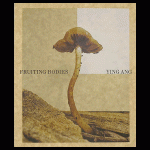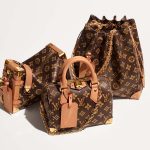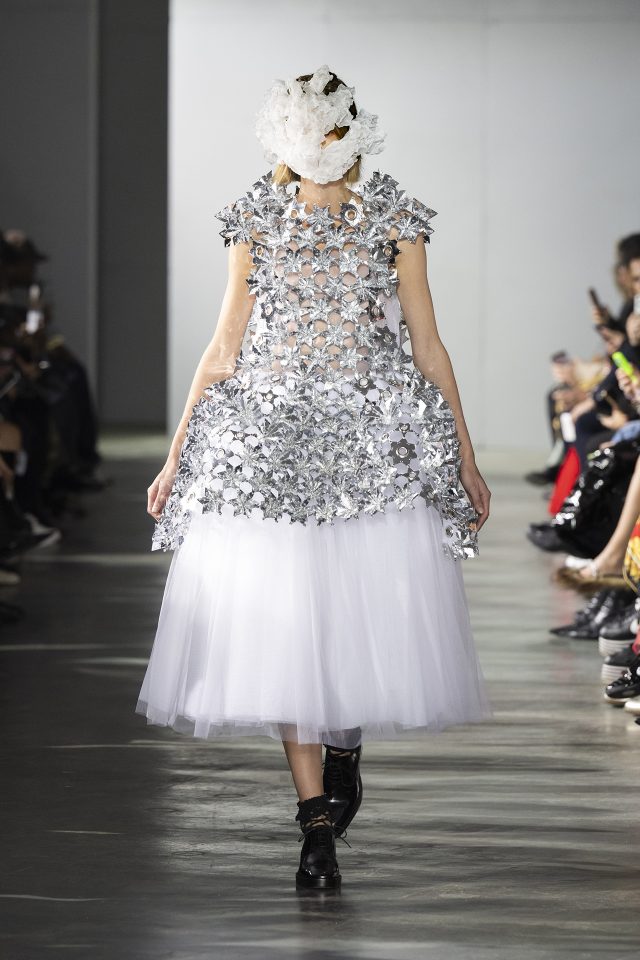ハニカム編集長、鈴木哲也インタビュー
Tetsuya Suzuki
2005年のローンチから現在まで、そのオンリーワンのスタイルが注目され、ファッション、アート、カルチャーなど、さまざまな分野に影響を与え続けているWebマガジン『honeyee.com (ハニカム)』。オリジナリティあるコンテンツやブログなどは、日本語であるにもかかわらず、国内はもちろん、世界各地に多くのファンが存在し、2011年5月には『ハニカム』の女性版『.fatale (ファタール)』がスタートしたことによって、まさに国籍、男女を問わず最注目の Web マガジンとなった。『honeyee.com』『.fatale』の編集長である鈴木哲也氏に、Web マガジンについて、そしてファッションについての話を聞いた。
ハニカム編集長、鈴木哲也インタビュー
Magazine
*You’ll find the English text after the Japanese.

Photo by Chikashi Suzuki
2005年のローンチから現在まで、そのオンリーワンのスタイルが注目され、ファッション、アート、カルチャーなど、さまざまな分野に影響を与え続けているWebマガジン『honeyee.com (ハニカム)』。オリジナリティあるコンテンツやブログなどは、日本語であるにもかかわらず、国内はもちろん、世界各地に多くのファンが存在し、2011年5月には『ハニカム』の女性版『.fatale (ファタール)』がスタートしたことによって、まさに国籍、男女を問わず最注目の Web マガジンとなった。『honeyee.com』『.fatale』の編集長である鈴木哲也氏に、Web マガジンについて、そしてファッションについての話を聞いた。
—まず鈴木さんのバックグラウンドについての話を聞きたいです。
『honeyee.com(以後、ハニカム)』の前は宝島社で『smart(スマート)』というメンズファッション誌をずっとやっていました。『smart』は、立ち上げのときにフリーランスで入ったのですが、宝島社の雑誌が急に売れ出した時期があって、大量に社員を採用しだしたんだけれど、そのとき、『フリーのやつが正社員に指図したり、先輩面をするのはよくないから、お前も社員な』みたいな感じで入社したんです。そういう形で宝島社では9年ぐらいやっていました。でも、実はその前があって、「UPLINK(アップリンク)」に1年くらいいたんですよ。
—あー、それ昔聞いたことがあります!
キャリアのスタートが「UPLINK」というのは、まあ、ファッションではなく、音楽とか映画とかそういうモノの方が自分にはふさわしいと思っていたんですね。ただ、それ以上に、雑誌を作ること自体に興味を持っていて「雑誌を作る人」になりたいというのは、中学生の頃から考えていたと思いますね。
—中学生のころって『POPEYE(ポパイ)』とかの時代ですか?
どっちかというと『FOOL’S MATE(フールズメイト)』とか。
—そっちだ!(笑)
昔から専門誌志向が強いんですよ。特に中学生の頃は、当時、数誌あったアンダーグラウンドの音楽専門誌を読み比べるのがすごく好きでした。もちろん、実際に音楽を聞くことも好きだったわけですが、レコードを1枚聴く以上に、雑誌1冊読んだ方が、その手の音楽ジャンルが形成する世界観というか、コミュニティ感を感じられたんでしょうね。
—『ハニカム』を立ち上げたキッカケはなんですか?
宝島社を辞めてからはフリーで編集者をやっていました。藤原ヒロシさん、SOPH.(ソフ)の清永浩文さん、visvim(ビズヴィム)の中村ヒロキさんとは、『smart』をやってたころから取材等でお世話になっていたので、ハニカム以前にも当然、面識はありました。逆に言えば「面識がある」くらいだったのですが。宝島社を辞めた後も、いろんな雑誌でヒロシさんの取材をしていて、あるときヒロシさんに「インターネットを使って、なにかをやろうと思っている」という話をしてくれたんです。「コンテンツを作って雑誌みたいなことをネットでやりたいんだけど、手伝ってもらっていいかな?」って。それが、実際にはじめる1年ぐらい前の話ですね。その半年後に、清永さんから電話がかかってきて、「ヒロシさんから聞いてると思うけれど、(ハニカムを)本格的に始めるので打ち合わせしましょう」ということになり、そこが、僕にとっての「事の起こり」という感じ。ちょうど、2004年〜2005年にかけての話で、当時、世の中は「ヒルズ族ブーム」まっさかりで、僕ですら「インターネットってことは、儲かるんですよね?」みたいなのがなくはなかった(笑)。まあ、儲ける以前に、メディアとしてだけじゃなくて、有志の集まりによる新しいタイプの企業としての可能性を感じていました。ハニカムを始めるときは、いわゆる WEB マガジンみたいなものって、まだ、ほとんどなくて、どういうコンテンツを作るべきか、最初はちょっと迷いましたね。とりあえず、一般的なファッション誌の内容をウェブで展開するだけでも十分価値があるんじゃないかなとも考えていたんだけれど、実際に準備にかかるときには、「絶対、それじゃマズイ」と思いました。むしろ、自分たちの持ち得るオリジナルな情報や自分たちのコネクションをフル活用して、ブロガーも含めて、誰にも真似できないコンテンツで勝負するという方向にシフトしました。有名だからとか、いま流行っているからという理由で、すでに公開されている情報をつまんでいくのではなく、どこかしら自分たちのコミュニティ、あるいは、自分たちのカルチャーに必ずつながるようなものを中心にしようと。そうやっていろいろなものを自分たちの視点で切り取ってみせるということを徹底しようと。
—今のスタイルの原型ですね。
ちょうど、ハニカムが始まった頃に大きな転換が来たんだと思う。2000年代前半は世界的な好景気の影響もあって、ファッションの大きなトレンドは「セクシー」「グラマラス」「ラグジュアリー」みたいな、そんな感じだったと思うんですよ。それこそヒルズ族というのが、日本でその世界的好況を享受していたわけですが。で、やたらと高いモノを皆が欲しがっていた。それが、実はサブプライムよりちょっと前ぐらいだと思うのですが、そういった成金趣味的なラグジュアリーがだんだん格好悪く感じるようになってきた。それと並行して、東京のストリートブランドと言われていたものが、世界的なメンズファッションの中で一定のポジションを獲得するようになってきていたわけです。それはどういうことかと言うと、それまでストリートファッションというのは、例えばスケートボードやヒップホップのようなファッション以外のカルチャーとセットになることで意味を持つようなものだった。逆に言うと単体のプロダクトとしての出来不出来を問うようなものではなかったわけです。それが、東京のインディペンデントなメンズカジュアルブランドは、いつの間にか純粋に服だけで評価されるようになってきた。その評価とはベーシックでありながら、トレンドがうまく消化されていて、しかもプロダクトとしてのクオリティも高い、というようなものですね。今となっては海外の人たちも、例えば visvim やN.HOOLYWOOD(エヌハリウッド)や White Mountaineering(ホワイトマウンテニアリング)等といったブランドを見て、「これ、ホントに東京っぽいの?」とか、「ヒップホップと関係あるの? スケートとは? パンクとは?」とか、もう言わないと思いますよ。つまり、いちいちカルチャー的な背景を持ち出さなくてもいいくらい、日本のインディペンデントなメンズブランドは世界的に通用する普遍的な魅力を持つようになった。僕はそうしたファッションの流れを日本のインディペンデントなブランドの成長とともに見てきたから、少なくともメンズにおいては、マーケットも含めた全体の傾向を相対的に見渡せるポジションにいるというのは自覚しています。一つのブランドが成長していく過程をつぶさに見ると、ファッションを巡るいろいろな要素を一気に理解できるのです。そして比較的早い時期に WEB で表現してきたというのも重要だったと思います。
—そのポジションとは?
今となっては当たり前という顔をしていますが(笑)、LOUIS VUITTON(ルイ・ヴィトン)やHermès(エルメス)のパリのランウェイショーをね、僕がちょこんと座って見ているのって不思議といえば、やっぱり不思議なんですよ。それは、先ほどの「全体の傾向を相対的に見渡せるポジション」を「WEB媒体として」手に入れたからです。つまり、ハニカムは一般のファッションを扱うメディアに比べ、いくつもの意味でユニークなんです。国内ブランドの細かな動向、海外ブランドの戦略意図、国内外のマーケットのトレンド等といったものをファッションだけでなく、アートや、音楽等のカルチャーの動きと重ねながらどこよりも早くWEBで発信できる、というような。そういうユニークなポジションを持っているので、大手出版社のファッション誌に引けを取らないプレゼンスを少なくとも業界内では持つことができていると自負しています。
—それは仕向けてたんですか?(笑)
当然です(笑)。というか、絶対やれると思っていました。
—具体的にどういう風にそっちに向かわせたんですか?
まず、「インターネット版◯◯」みたいに見えないようにする。「ハニカムは、ハニカム」と、とにかくアイデンティティを徹底することを考えました。それをWEBという、ファッション関係のメディアなかでは、未だオルタナティブな場所でやるから、ブランド側からしても抑えておきたいひとつになる、と。このポジションは一番先に取らないといけないと思っていたから、そこは頑張りました(笑)。とはいえ、成長のスピードが遅いというか、いつまでたってもこんなものなのかとも思っているんですけど。
—えっ!これでも遅いんですか?
小さな会社なので、どうしても慎重にいかないといけないときがあるわけです。「.fatale」も、もう少し早くやれればよかったのになって思う。「これだけやっているのに、なんでこれしか盛り上がらないんだろう」と今も結構、悩んでますけど(笑)。
—いまはパリコレにどのくらいの頻度で行ってるんですか?
『.fatale』の編集長もやっているからメンズレディース合わせて年4回見る権利を有してはいるんですけど。
—レディースの状況っていまどうなんですか?
やっぱり産業としてメンズとはスケールが違います。メンズはやっぱり、どこまでいっても鉄道マニアの世界と一緒(笑)。メンズファッションのビジネスって、オタク産業の一種ですよ。それは、売る方もファッション好きだし、買う方もファッション好きということですね。売る側と買う側の感覚が近いんです。ところが、レディースはあっちを向いている人をこっちに振り向かせるみたいな、そういうビジネスですよね。
—具体的にいうとどんな感じ?
なかなか言いづらいのですが、その価値をまだ理解していない人、あるいは、まだ必要としていないような人にも、積極的にアピールするって感じですかね。もちろん、どのブランドも価値あるものを日々生み出しているわけだから、「買って損した」みたいなことはないのですが、なんというか、打ち出し方の迫力が違う(笑)。レディースは華やかだけれど、その分、シビアですね。メンズは最終的には、同じ趣味の人たちの間でお金回しあっているようなものだから(笑)、ほのぼのしていますね。
—モードとストリートは?
モードとストリートを比べること自体がナンセンスだと気づきました。ジャンルが違うんですよね。音楽で言えば「Public EnemyとThe Rolling Stonesどっちがクオリティ高いと思いますか?」って聞かれても答えようがないというか。日本人って、「娯楽」とか「趣味」のなかに「ファッション」っていうジャンルがあって、そのなかに「モード」とか「ストリート」とかが、テイストで分かれて存在していると思っているでしょ。で、そういう感覚で、モードやハイファッションを見に行くと、意味がよくわかんないですよ(笑)。でも、「モード」というのが、きっちりとジャンル分けされていて、そのジャンル内の文脈で「美」がアップデートされていると理解すればクリエーションの価値や意味が理解できるんだと思います。ただ、ここはまた複雑なんですけど、ジャンルがはっきりあるうえでジャンルレスな雰囲気というのを、今のモードは求めているように見えます。あくまで「モードというジャンル」の中で、テイストとしてのストリートを取り入れようとしているというか。それがまた「ストリートとモードの融合」かというと、ちょっと違う気がします。
—学問のような感じですか?
まあ、十分にそういったものになりうる歴史と文化的背景みたいなものはあるんでしょうね。でも、学問としてのファッションとかには、僕は興味ないです。そもそも、「文学って、本当に学問なのか?」と思っているクチなので(笑)。
—そうしたファッション観、あるいは、モード観はいつから?
それは、『.fatale』をはじめてから決定的になりました。ただ、モードの世界って、その文化的な背景も含め、魅力的な多くのものを含んでいる一方、やっぱり、皮相的な部分もハッキリとあるんですよね。ファッションショーの会場にそのシーズンのトレンドのバッグやら靴やらを身につけた「いかにも」っていう人たちがやってくると、ワァーってカメラマンが寄ってきて、一斉にパシャパシャって撮る風景に顕著というか。UPLINKあがりの僕からすると「なんて軽薄な」ってなるのですが(笑)。なんか、ビジネスとかコマーシャルっていうのともまた違う、単に幼稚な自己顕示欲を必要以上に肯定する雰囲気もある。その一方で、もちろんビジネスに対してはすごくシビアでありながら、何よりもクリエイティビティにおけるプライドを優先する部分もある。モードの世界はウォッチ対象としてすごく興味深いです。
—日本のファッションシーンをどう見ています?
海外のファッション関係者は「日本のメンズはすごくいい」って世界中の誰もが言いますね。メンズは粒がそろっていて、いいブランド、優秀なデザイナーたちがゴロゴロいる。日本に来るとアレも欲しいしコレも欲しいみたいな感じになるようです。
—日本のメンズのどこがいいって評価されているんでしょうか?
今、メンズの主流は圧倒的なオリジナリティとか際立ったユニークさよりも、トラディショナルな「男の服」という枠の中でどれだけ変化がつけられるか、ということの勝負になっている。これはカジュアルにも言えます。簡単に例えると、現代を舞台にした映画で登場人物が着ていて違和感がないくらいのものが良いというようなことです。その点、日本のブランドは、それがトラディショナルに見えるためのディテールの扱い方がうまい。逆に言うとトレンド感を自然に表現するのがうまいわけです。そのうえで、素材の選び方や細かな仕上げによるニュアンスの出し方にとても神経質ですから、服好きはみんな共感するんですよ。大体、日本のメンズのデザイナーは自分が服マニアだから。当然、服好きの心を掴む術は熟知してる。
—アジアはどうですか?いまアジアのマーケットとかってすごいっていわれてるじゃないですか。
マーケットとしては大きな可能性を持っているのは間違いないでしょうけれど、ファッションに関わっている欧米の人たちには、今まで自分たちが培ってきたルールが通用しないかもしれない、という不安もあると思います。やはり、90年代以降、ファッションの世界もかなりポストモダン化というか、ハイコンテクスト化というか、つまり、ファッションの変遷に関する最低限の知識や文化的な背景を知らないと、どこが魅力的だかわからないようなものになってきている。特にセクシー&ゴージャスのブームが終わったここ数年はそれが顕著です。コンテンポラリーなファッションに関しては同じ文化圏にいる欧米プラス日本では、その変化を繊細に理解する人がもちろん大勢いる。むしろ、日本人は過剰に理解する。でも、日本から先のアジアでは、その辺がまだ微妙ですよね。
—ところで、ファッションってクリエーションってよく使う言葉じゃないですか?ファッションのクリエーションってどういうことですかね?
だから、その「ファッション」という括り方が大雑把すぎる(笑)。モードとストリート、レディースとメンズでは、クリエーションのもつ意味が異なる部分があると思います。ただ、これは僕の考えですが、欧米の人たちには「美」や「倫理」というものは時代と共にアップデートされるべきものだ、という考えが根底にあるような気がします。なので、特にモードは服飾による「新しい美の発見」を絶え間なく行なってきているのだと思うんです。そして、その「新しい美」には、現代的なセクシャリティのあり方といった思想的な要因も大きく影響する。また「ファッションにおけるクリエイティビティ」に関する質問というのは、ビジネスとクリエーションの関係のようなものも暗に含んでいると、勝手に解釈すると(笑)、やはり、経済的合理性のない創造というものは、ちょっと想像しづらい。となると、当然、一定の商業的な成功を前提としなければクリエーションも存在できないわけですが、そのうえで、今はもう一度「商業的価値」と「芸術的価値」ないし「文化的価値」を分けて考えることも必要かなと思います。ここしばらくの風潮に、「商業的成功」の過大評価があると思います。それだけだと、よく言うように「世界一おいしい食べ物はマクドナルドのハンバーガー」となってしまう。ビジネスの規模としては決して大きくはないものの、「コンテンポラリーな美」あるいは、「未来の美」を感じさせる優れたクリエーションを発表しているデザイナーが世界中にいます。そのことをできる限り知らしめていくのも僕らの仕事だと、これはキレイ事ではなく思っているんです(笑)。
—世界的に見て、メンズファッションの傾向はどうなってきているんですか?
メンズファッションに関して言えば、パリが絶対的な影響力を持つことができない状況になっているように見えます。もちろん、今なお大きな影響力を持っているし、関係者は皆、パリの動向を意識しているわけですが、パリのメンズモードとは、世界のメンズファッションのトレンドを構成している中の「主要な一部」なのだと思います。つまり、絶対的な権威ではない、と。それは、ファッションを楽しむ層の変化というか、イタリア、日本に加え、アメリカやアジア各国でも職業やセクシャリティのうえで、普通の男性がファッションにお金をかけるようになっていると僕は見ています。職業というのは必ずしもクリエイティブな仕事や表現関係の仕事だけでなく、成功した企業家やビジネスマンも自分たちのライフスタイルを構成するなかでファッションの重要性に気づいてきているということです。そして、そういう人たちのリクエストに答えているのが、パリのランウェイだけではなく、むしろ、ニューヨーク、ミラノ、フィレンツェ、そして東京といった場所でプレゼンテーションを軸にコレクションを発表しているようなブランドだったりする。そういうブランドのことも世界中の百貨店やセレクトショップのバイヤーは細かくチェックをしていて、高い評価を得ているブランドもたくさんある。これはフランスのブランドですが、Kitsuné(キツネ)なんかはその典型ですし、Engineered Garments(エンジニアガーメント)をはじめ日本にも、そういうかたちで高い評価を得ているブランドがたくさんあります。現在、アメカジやプレッピー、あるいはトラッドのリバイバルは世界的なトレンドとして定着していますが、これは、実は「パリ以外」、主に「イタリア、アメリカ、日本」の共通の傾向のように見えます。ただ、一方でこうしたトラッド回帰もやや飽和感があるのも事実です。
そこで、しばらく前から僕が「次に来る」と読んでいるのが「もしも、CÉLINE(セリーヌ)にメンズがあったら」というテイストのもの。そういうものが出てきたら、ジャーナリスト、バイヤーは絶対に高く評価するだろうと、睨んでいるのですが、それがポチポチ出はじめてきた気がします。具体的に言うと ADAM KIMMEL(アダム キメル)なんかに、ここ2シーズンぐらいはそんな雰囲気のピースが出始めていると思います。
—いま注目している日本のブランドはありますか?
短期的に見るか、中長期的な視点で見るかによって変わりますが、2012AWでいったら TOGA(トーガ)のメンズがすごく新鮮で良かった。この「TOGA のメンズが良い」というのに気がついている人は少ない気がするので、本当はもう少し黙っていたいところですが(笑)。あと、僕はよく「いまの東京を象徴しているブランドはなにか」っていうのを考えるんですけれど、White Mountaineering(ホワイトマウンテニアリング)というブランドは、そういう気分を上手く表現し続けていると思います。もちろん「現在の東京」というのは、ひとつのブランドで表しきれるわけではないので(もちろん、デザイナーはそんなことをする必要もないのですが)、いくつかのブランドのコレクションから、「現在の東京っぽさ」を感じ取るわけですが、2012AW では、その TOGA のメンズや、sacai(サカイ)のメンズ、あるいは、N.HOOLYWOOD(エヌハリウッド)あたりが、それぞれテイストが違う故に「現在の東京」を断片的に象徴しているような気がします。話は逸れますがデザイナーの才能、という点では THE SOLOIST(ソロイスト)の宮下貴裕さんはやはり抜きん出ていると思います。あと、今後の成長が気になるという意味では、やっぱり PHENOMENON(フェノメノン)。
—おもしろいっていう理由は一言で言うと?
PHENOMENON に関しては、「これはモードなのか?ストリートなのか?」というようなことを問うこと自体がナンセンスって気分にさせる力を持っていると思います。
—日本ならではっていう感じはありますか?
日本は海外のファッションをものすごい勢いで雑食的に消費してきた国だから、そういう消費のされかたによって生まれてきたのが日本のファッションマーケットであり、クリエーション。今まで挙げてきた日本のブランド、デザイナーは皆そういう環境で生まれてきたわけです。ただ、こうした日本独特のファッション観というか、ファッションのあり方や楽しみ方は、日本特有のローカルな現象だろうと思っていたわけですが、実は欧米を含めた海外でも意外と共感され始めている。ローカルだと思っていたことが国境を超えた普遍性を持つというような「逆のグローバリズム」って少なくともファッションの世界では確実にあると思います。
そうそう、そこで、声を大にして言いたいのは(笑)、例えば、同じ日本のポップカルチャー同士だからというような理由で「裏原と秋葉原の融合を!」とかいう人が未だにたまにいますが、もうホントにナンセンス。明らかな時代遅れ。だって僕らよりも秋葉原カルチャーに精通している外国人っていうのがいっぱいいるわけですよ。日本人だからアニメや漫画に対して他の国の人たちよりもアドバンテージがあると思っているのがもう古い。だってファッションの世界では、日本人が世界で一番アメリカンカジュアルを理解しているっていうことを世界中のファッション関係者が認めちゃっているわけです。「イタリア人よりイタリアンで、フランス人よりフレンチで、アメリカ人よりアメリカンなのが日本のファッション好きの男だよね」って真顔で言いますからね(笑)。で、逆もしかりで日本人よりも日本のカルチャーに詳しい外国人というのが今は結構いて、それは今の日本人は自国の文化に無関心とか、知識が浅いとか、そういう意味じゃなくて、面白そうなものがあれれば、世界が勝手に見つけてしまうという、そういう時代が来つつあるってことなんですよ。もちろん、本当にオタクカルチャーを理解している人ならいいんですよ。でも、「自分も日本人だから」程度の理由でアニメだ、漫画だと言い出すのはもうダメでしょうね。
—今後は新しいことをなにか考えていますか?
『.fatale』を頑張る、ですかね(笑)。やっぱりファッションをメインにしているなら本丸はレディースなんだなということに気づきまして。『.fatale』は世界的に有名なファッション媒体に引けをとらないモノにしたいという風に割と本気で思っています。会社の売上とか規模は小さいとしても、メディアとしての存在感やクオリティでの勝負となれば、負けられない。「自分たちのスケールだったら、この程度で充分かな」という気持ちで作っていては、ローカルでマイナーなもので終わってしまうと思うんです。まあ、そのくらい風呂敷広げておかないと人様にお見せするモノは作れないんじゃないか、というのもあるんですが。あと、インディペンデントで歴史もないけれど、センスさえあれば一番になれるというのが、インターネットの世界のいいところだと思っています。
—最近はウェブメディアとかファッションブロガーとかいっぱい出てきているじゃないですか。その中で鈴木さんが気になっているサイトやブロガーは?
やはり『OPENERS(オウプナーズ)』と『HOUYHNHNM(フイナム)』ですかね。ふたつとも『ハニカム』と同じくらいの時期にはじまっていて、つまり、ファッション系ウェブメディアの黎明期に、なにも参照するところがない中ではじめていって、いまもちゃんと残っている。ライバルっていう以前にある種のシンパシーを感じます。
—海外のバイヤーにもっと Japan Fashion Week に来てもらうようにするにはどうしたらいいでしょう?
ファッションショーを含んだファッションウィークを「ファッション・フェスティバル」みたいに勘違いしている人が多いんですけど、基本的にはビジネス見本市なんですよ。もちろん、それだけじゃないところがファッションのいいところではあるんですが、やはり、トレードショーとしての側面が基本にあって、それにいろいろと乗っかっていると考えたほうが実情に近い。けれど、そのデコレーションの部分だけを部外者がアレコレ言うからおかしくなるのであって、トレードショーとしてきちんと買う側も売る側も納得できるようなモノにしていくという風に意識を変えるだけで、良くなると思いますけどね。そもそもメンズとレディースを一緒にしていいのかという問題もあるし。昨年の VERSUS TOKYO (バーサストーキョー) はこれを逆手に取って「ファッションフェス」としてやりきってしまったからインパクトがあったわけだけれど、海外のバイヤーやジャーナリストには理解しづらいというか、「仕事」がしづらいでしょうね。
—東京のおすすめのスポットを3つ教えてください
THE CONTEMPORARY FIX(コンテンポラリーフィックス)
住所: 東京都港区北青山3-12-14 MAKO北青山ビル1F
TEL: 03-6418-1460
今一番東京っぽいショップであることは間違いないし、そのうえで、オリジナリティがしっかりある。ショップとお客さんが信頼関係で結ばれているのも良いですね。
VISION(ヴィジョン)
住所: 東京都渋谷区道玄坂2-10-7新大宗ビルB1F
TEL: 03-5728-2824
いろんな意味で、「日本のクラブカルチャーをひとつにまとめよう」というような意気込みを感じます。「話題の大箱」ということだけでなく、そうしたコンセプトというか雰囲気自体が、今までありそうで無かったものだと思う。
montoak(モントーク)
住所: 東京都渋谷区神宮前6-1-9
TEL: 03-5468-5928
このお店が、というより山本宇一さんがやはり素晴らしい。マニアックで趣味の良い物って意外と作るの簡単なんですよ。ポイントはそこにポピュラリティを込められるか。宇一さんはお店ごとにコンセプトを変えても、その「趣味が良く、なおかつポピュラリティがある」というのが絶対にブレない。結果、いつ誰といっても居心地のいいお店になるんですよね。
<プロフィール>
鈴木哲也 (すずきてつや)
アップリンク、宝島社を経て2005年ハニカム設立に参加。以来、WEB マガジン『honeyee.com (ハニカム)』の編集長としてファッション、ライフスタイル情報を中心としたコンテンツ作りを行う。また、2011年には女性向けファッション WEB マガジン『.fatale (ファタール)』をスタートさせる。
One particular identity has managed to capture many hearts since its launch in 2005. The web magazine honeyee.com has continuously been making an impact on the fashion, art and lifestyle genres. Its original blogs and digital content attract many fans from across the world. In May 2011, a new addition to the family was launched: .fatale, the female edition of the website. Transcending conventional boundaries of nationality and gender, honeyee.com has become a truly remarkable web magazine. We spoke to Tetsuya Suzuki, the Chief Editor of honeyee.com and .fatale, about his thoughts on web magazines and fashion.
—Could we first ask you to tell us about your background?
Before launching honeyee.com, I was an editor at men’s fashion magazine smart at Takarajimasha, Inc.. I was working on a freelance basis, but when sales suddenly skyrocketed, the company started to hire a bunch of full-timers. Some of my colleagues said that I would not be able to take the initiative in the team and give out directions if I kept my freelance status and they recommended that I become a permanent employee. That’s when I decided to officially join the team. For the past 9 years, I have worked at Takajimasha, Inc.. Before joining smart, I was with UPLINK, a film distribution and production company, for about a year.
—Yes, we’ve heard about UPLINK before!
I started my career with UPLINK because I felt I was most suited to music, movies and so-called “lifestyle” topics. But above all, I was interested in creating magazines. Becoming a magazine maker is something that I have dreamed about since junior high school.
—Your junior high school days… Was that when POPEYE magazine was at its peak?
No, but FOOL’S MATE magazine was rather popular back then.
—Oh, that one!
I have always orientated myself in magazines which specialize in a certain field. When I was in junior high school, I used to love reading underground music magazines and comparing them to one another. I obviously loved listening to the actual music itself, but I felt like I could relate better to that part of the world, or rather, the community that a certain genre of music creates, by reading a magazine about it instead of listening to the entire CD.
—How did the launch of honeyee.com come about?
After leaving Takarajimasha, Inc., I became a freelance editor. I’d known Hiroshi Fujiwara, Hirofumi Shimizu (SOPH.) and Hiroki Nakamura (visvim) before we started honeyee.com together. I’d interviewed them when I was at smart. We knew each other remotely and that was all. After my time at Takarajimasha, Inc., I was interviewing Hiroshi for several different magazines. At one point he said, “I want to start something up on the internet. I want to create web content and make an online magazine. Is there any way you can help me out?”
That happened about a year before the actual launch. Six months later, I got a phone call from Mr. Shimizu and he said, “I’m sure you’ve heard about it from Hiroshi, but we would like to officially get down to business now, so let’s have a meeting”. That was my turn up for the books. This was around 2004 or 2005 and we were right in the middle of the Roppongi Hills Clan boom, so it would be a lie if I said nothing crossed my mind. I thought, “An internet business… That’s gonna make us a lot of money, right?”
I was betting on this new business, but I also saw the great potential of what could be not just another medium, but also a new type of enterprise created by a group of like-minded people. When we launched honeyee.com, there was no such thing as a “web magazine” medium. Initially, I had a hard time coming up with ideas of what to deliver on the website. I thought that there was enough value in just laying out general fashion content, but throughout the preparation period, my instinct kept saying, “That’s not good enough.”
In order to compete, we decided instead to shift our direction with content that no one would ever be able to copy. We took full advantage of original information and connections that we already shared, including the bloggers. We did not want to feature information that had already been exposed only because the people involved are famous or because it happened to be the trend of the season. We wanted to feature something with a backbone that would somehow link to our own network or connect our culture. We wanted to absorb a lot of different elements from our own different perspectives. That’s what we wanted to be thorough about.
—Is that original direction the source of your current style?
The moment when honeyee.com launched was a big turning point for me. During the early 2000s, the global economy was picking up. Because of that, the main fashion trends were centered around the ideas of being “sexy”, “glamorous” or “luxurious”. In Japan, the Roppongi Hills Clan was enjoying the benefits of that economic boom and everyone wanted extremely expensive things.
However, right before the U.S. subprime mortgage crisis occurred, all that nouveau riche luxury started looking dated. At the same time, the fashion brands that were once known for street fashion only started to establish a certain position within the international men’s fashion scene. The reason for this was that, in the past, street fashion formed around a certain culture – perhaps skateboarding or HipHop – instead of just fashion itself. In other words, the success or failure of a single product was never an issue. But almost before anyone realized it, all the independent Japanese men’s casual wear brands started to be judged on the sheer quality of their clothes themselves. The clothes were basic, but at the same time, the seasonal trends were blended into these collections very well. On top of that, the quality of the products was superior and that was their final appraisal. I bet foreigners no longer say, “Are these clothes really Tokyo-esque?” or “Do they have anything to do with HipHop, skateboarding or punk culture?” when going through brands like visvim, N.HOOLYWOOD or White Mountaineering.
The cultural significance located in the brand’s background is no longer necessary because Japanese men’s independent fashion brands now have a universal appeal which is of a high enough standard to compete on a world level. Because I have seen the flow of fashion moving alongside independent brands which have grown in Japan, I believe that I stand in a position where I can comparatively predict the overall trends, including the market – at least in the men’s fashion industry. When I take a close look at the blossoming of a brand, I have an understanding of the elements which swirl around fashion. I think it was important to express that on the internet relatively early on.
—Can you give us more information on what this position might be?
I’ve become used to the whole scene, but I still find it odd to see myself sitting at the Louis Vuitton or Hermes runway shows in Paris. I’m there because I got myself into the position of being able to comparatively predict overall trends through creating a web magazine. This proves that honeyee.com has so much varied uniqueness in comparison with other fashion media.
This website stands in a special place. It has the ability to upload all kinds of information. For example, the specific development of any national brand, the strategic plans of foreign brands or market trends outside Japan. It reflects not just on fashion, but on art, music or other lifestyle related fields with such an extraordinary speed, making us the fastest web source sending out such information. This is why we are able to sustain a comparable presence in the industry which will not be outdone by fashion magazines run by major publishing companies.
—Did you strategically think this through in order to work your way up?
Of course! I knew for sure that we’d be able to pull it off.
—Specifically, how did you manage to do this?
We made sure the site didn’t just look like the web version of some magazine. We secured a strong identity by making it clear that honeyee.com is indeed honeyee.com. I knew that this new media source would become something that any fashion brand would want to get hold of. We’ve built such a remarkable presence on the Internet and it is still one of the most alternative media choices within the fashion industry today. I felt that it was important to establish this position faster than any other competitor, so I put a lot of effort into it. Despite all this, I can find the speed of its growth very slow. I can’t help but think, “Is it going to be like this forever?”
—Wow, you think it’s growing slowly?
Because the business is run by so few people, we must handle things very carefully. I feel the same way about .fatale. I wish we could have launched it a little sooner. Even now, I sometimes get rattled and say to myself, “How come it doesn’t get more attention when we’re putting so much effort in?”
—How often do you attend Paris Fashion Week?
As I’m also the Chief Editor of .fatale, I get to go to Paris four times a year for both the men’s and women’s collections.
—How do you find the women’s collections?
As a market, the scale is completely different to the men’s. Wherever you go, the menswear area reminds me of railway maniacs. The business is such a nerdy market: the sellers are obsessed with fashion and the buyers are also obsessed with fashion. These senses of fashion are very similar to each other. On the other hand, the women’s market is like trying to get the attention of buyers who are not even looking at you.
—Can you be more specific?
It’s hard to describe, but the women’s market is all about trying to get the attention of people who do not understand the value of the products or who do not even need the products right away. Of course, every brand produces something valuable. Therefore, there is no such thing as losing money in purchasing it. However… I think the dynamic of introducing their products is different. Womenswear is certainly glamorous, but at the same time, it’s extremely harsh. At the end of the day, menswear feels very mellow because the business goes round in a circle among people who share the same hobby.
—What about high fashion and street style?
I finally realized that it is nonsense to even try and compare high fashion and street style. The genres are completely different. It’s like being asked, “Which band do you prefer: Public Enemy or The Rolling Stones?” There’s no way of comparing the two. The Japanese think that a genre called “fashion” exists in “entertainment” or “hobbies” and that different categories like “high fashion” and “street style” reside in “fashion”. But if you go into fashion with that kind of mindset, everything becomes very confusing.
If high fashion were to be categorized properly and its beauty were to be updated in context with the same taste, then I would be able to understand the value and the meaning of its creation. However, things are even more complicated than that. I feel like current high fashion is seeking a “genreless element” after insuring its style. It’s like bringing in a new taste called “street” into a genre called “high fashion”, but I think it would also be wrong if I said it’s the “marriage of street style and high fashion”.
—Do you think it is like academia in any way?
Well, I’m sure there is enough historical and cultural background there to make it relate to academia. However, I’m not interested in fashion as an academic. For a start, I’m someone who would ask, “Is literature part of academia?”
—When did you start having this perspective on fashion? Or this perspective on high fashion?
Everything became clear when we launched .fatale. The world of high fashion contains many attractive elements, including its cultural background, but at the same time, there are obviously plenty of superficial aspects to it as well. They’re most apparent when I see loads of photographers taking pictures of people dressed head to toe in the current season’s on-trend shoes and bags and trying so hard. To someone like myself who came from UPLINK, it can feel extremely shallow. There’s also this atmosphere of trying to justify such childish exhibitionism which really has nothing to do with business or commerce. On the other hand, there is a part of high fashion that takes precedence in its pride of creativity, even though it’s very demanding towards its business. I find it extremely interesting as something to keep an eye on.
—What do you see in the Japanese fashion scene?
Every international fashion industry figure in the world would say that Japanese men’s fashion is amazing. There are plenty of fantastic brands as well as talented designers. When these people come to Japan, they all go crazy with shopping sprees.
—Which part of the Japanese men’s fashion scene has received such recognition?
At the moment, the mainstream of the men’s fashion scene is all about competing to make a difference within the bracket of a traditional style of menswear rather than displaying its overwhelming originality or its uniqueness. I could say the same thing about casual wear. It’s like being able to relate to the clothes that actors are wearing in a movie taking place in the present day. Japanese brands are incredibly good at handling details which make them look very traditional. To put it another way, they do a fantastic job of expressing a trend in the most natural manner. On top of that, they are very sensitive about choosing materials which reflect nuances; the most delicate finishing touches. Anyone who loves clothes can empathize with this. Most of the men’s fashion designers in Japan are fashion freaks. They already have full knowledge of how to steal the hearts of other people who adore clothes too.
—How about the rest of Asia? Everyone talks about how the market is rapidly growing in Asia.
It is no mistake that there is great potential in Asia as a market. However, I’m sure there are some western fashion industry figures who are concerned about the possibility of the rules that they have cultivated over the years and how they may no longer apply there. After the 90s, the world of fashion became more post-modern and more about high context, meaning that you must have a minimum knowledge of the cultural background of the fashion transition to be able to appreciate what is appealing or not. It is remarkable, especially in the last few years after the passing of “sexy” and “gorgeous” as buzzwords. There are a lot of people who can sense such subtle changes in both Europe and Japan as we all share the same culture in terms of contemporary fashion. The Japanese can understand it particularly well, but I’m not sure if the rest of Asia could share the same level of understanding.
—We often hear variations on the phrase, “Fashion is creation”. What do you think is meant by “Fashion is creation”?
I find the word “fashion” in this context way too rough. There are many different meanings of “creation” within high fashion, street fashion, womenswear and menswear. It is only my opinion, but I feel that there is a core belief in Europe that “beauty” or “logic” should be updated as time goes by. Therefore, they have constantly been on this adventure of finding a brand new beauty in clothing, especially when it comes to high fashion.
Furthermore, the intellectual factor of how modern sexuality should be influences the new beauty in a major way. If I may personally interpret your question about the creativity of fashion, I feel it also contains a question about the relationship between business and creativity which makes it hard to imagine creativity without economic rationality. That means that any creation cannot exist without a certain commercial success as a premise.
I believe that we must re-examine “commercial value”, “artistic value” and “cultural value”. Recently, we have witnessed some overrated commercial successes, but if you only see one side of the story, then everything suddenly becomes all about, say, the world’s best food being McDonald’s burgers. Even though the size of the businesses may not be huge, there are many designers in the world who continue to launch a kind of creation that expresses “contemporary beauty” or the “beauty of the future”. I believe that my job is to let the world know about them. I’m not trying to be corny here; it’s just my true belief.
—Which direction is the international menswear scene going in?
My belief is that Paris no longer has absolute power over the current menswear scene. Of course, this doesn’t mean that Paris has lost all control. Paris still commands a great deal of influence and all industry insiders consciously pay attention to all that goes on in the city. However, the Parisian men’s high fashion scene now plays the role of being one of the “most important elements” in the making of global trends. This means that Paris does not hold absolute authority in the industry anymore.
I think the situation has changed because the public has become more interested in fashion. Like men in Italy and Japan, men in America and other Asian countries have started spending more money on fashion. They’re guided by their career choices or sexuality. When I say “career choices”, I don’t just mean people with creative or artistic jobs. Successful entrepreneurs and businessmen are now realizing how important fashion can be when they’re thinking about their ideal lifestyles.
The brands who offer what these men are looking for don’t just present their collections in Paris anymore. They also present in New York, Milan, Florence and Tokyo. Other international cities are now the centers of their businesses. Many international buyers have kept a close eye on these brands. As a result, some of them have become highly valued. The French brand “Kitsuné” is a classic example of this. There are also many Japanese brands (like “Engineered Garments”) who have good reputations as a result. These days, the revival of “American casual”, “college preppy” or “trad style” is sinking in around the world. This revival is “non-Paris” and it’s becoming more popular in Italy, America and Japan.
On the other hand, I do feel a sense of saturation in the “trad style” comeback. So I’d like to ask, “What if there was a male version of CÉLINE?”. If a menswear brand with a similar aesthetic to CÉLINE was launched, I bet it would be highly valued and quickly recognized by journalists and buyers. I do feel like I’ve started seeing more brands skirting around this notion. “ADAM KIMMEL” has been launching pieces with a similarly strong atmosphere for the last two seasons.
—Which Japanese brands are you interested in at the moment?
It depends on whether you have a short-term or a long-term perspective on things. However, far as 2012AW goes, the “TOGA” men’s collection was fantastic. It felt very fresh. It seems as if not many people have noticed how great TOGA’s menswear really is, so I would actually like to keep it quiet for a little longer, haha.
I often think, “Which brand truly embodies contemporary Tokyo?”. In my opinion, a brand called “White Mountaineering” has been managing this very well. Of course, it’s impossible for just one brand to embody “contemporary Tokyo” (and besides, it’s unnecessary for any of the designers to do so). Therefore, I feel I must look for the same kind of elements in several brands each season. In 2012AW, “TOGA”, “sacai man”, and “N.HOLLYWOOD” caught my attention. They have managed to represent fragments of contemporary Tokyo within their different styles very well. Incidentally, as far as pure talent goes, I think Takahiro Miyashita of “THE SOLOIST” is an exception. I’m also definitely looking forward to seeing how “PHENOMENON” will develop.
—Could you tell us more about “PHENOMENON”?
“PHENOMENON” has the ability to make you think that it’s just nonsense to even try and define them as “high fashion” or “street style”.
—Do you mean that there’s something very “Japanese” about this brand?
Japan is a country that’s been impulsively consuming foreign fashion brands. That’s how our fashion market and our creations were born. They were formed by the way that we have spent money. All the brands and designers that I’ve mentioned today were born into this environment. I’ve always believed that the very original Japanese fashion point of view, concept or way of enjoying fashion is a reflection of our unique “local” phenomenon. As a matter of fact, it’s becoming surprisingly more relatable to other countries, including those in Europe. Something we thought we could only share in Japan is now transcending national boundaries to achieve universality. This is “reverse globalization” and I think it’s certainly possible for us to see it happen in the world of fashion.
One thing I’d just like to put out there: it’s ridiculous to say, “Let’s combine Urahara and Akihabara!” just because they both represent some aspect of Japanese pop culture. This opinion is clearly outdated. There are already so many foreigners far more familiar with Akihabara culture than us. The fact that we’re Japanese doesn’t mean that our knowledge of animation and comic books is automatically more advanced. That’s an old-fashioned way of thinking.
The same is happening in the world of fashion. Everyone in the industry has agreed that the Japanese understand the “American casual” look more than any other country in the world. Some people say with such seriousness, “Japanese men who are obsessed with fashion are more Italian than the Italians, more French than the French and more American than the Americans!”
There are a lot of foreigners who know way more about Japanese culture than actual Japanese people do. It doesn’t mean that Japanese people today have no knowledge or interest in their country. However, these foreigners with their advanced understanding of Japan exist because we live in a time where the world finds something interesting on its own and automatically presents it to us whether we like it or not. If you are a Japanese person who knows a lot about otaku culture, that’s totally fine. But just because you’re “Japanese”, you can’t act like you’re better than the rest of us anymore and talk about animation and comic books. That would be wrong.
—Do you have any future projects lined up?
Haha, I’ve got to keep working on .fatale. I’ve come to the conclusion that if you have a fashion publication, the main focus has to be on womenswear. I strongly believe that it’s possible to make .fatale global and on the same level as the rest of the successful international fashion media. If we were judged purely by our presence and the quality of our web magazine, we wouldn’t lose any competition, even if our company or turnover was quite small.
I don’t think we would have gone so far and become an offbeat web magazine if we’d had a mediocre mentality and said, “For the size of our organization, I guess this is good enough.” If we want to make something high level, then we have to set a lofty goal in order to motivate ourselves. What’s great about running a web magazine is that you can garner the most popularity if you have something that’s uniquely stylish. You don’t have to have a long prestigious history or be part of a big, independent company. That’s the beauty of the internet.
—Nowadays, there are so many internet fashion magazines and bloggers. Do you have any particular favourites?
I like OPENERS and HOUYHNHNM. Both launched around the same time as Honeyee.com. I relate to them very well – not just as rivals, but as compatriots. We all survived the earliest days of the fashion web media when we had nothing to refer to and nothing to compare ourselves with.
—What do you think can be done to attract more international buyers to Japan Fashion Week?
Many people make the mistake of seeing Fashion Week as a “fashion festival” which also happens to hold a lot of runway shows. It’s essentially a business trade show. Of course, there are other elements involved in Fashion Week. It’s these extra components which make the fashion industry so fantastic and the event even more exciting. Imagine the general structure of a trade show and then throw some extra bonuses in. That’s a clear description of Fashion Week.
The reason why things get confusing is because people outside the fashion industry only talk about these extra bonuses. I think everything will improve when the buyers and sellers decide to turn Fashion Week into a trade show satisfying enough for everyone involved.
There’s also one question which needs addressing: “Would presenting men’s and women’s collections simultaneously be okay?”. Last year, “VERSUS TOKYO” took advantage of the confusion about what a fashion week should be like and turned their event into a complete “fashion festival”. It made quite an impact, but I’m sure it was hard for foreign buyers and journalists to understand this concept. It must have been very difficult to do their job.
—Are there any Tokyo hotspots you recommend?
THE CONTEMPORARY FIX
3-12-14-1F Kita-Aoyama Minato-ku, Tokyo
Tel: +81(0)3-6418-1460
I can say with absolute certainty that this shop has managed to embody contemporary Tokyo. Furthermore, their originality is genuine and it’s nice to see the loyal relationship between the shop and their customers on display.
VISION
2-10-7-B1F Dogenzaka Shibuya-ku, Tokyo
Tel: +81(0)3-5728-2824
I can see such enthusiasm here about bringing Japanese club cultures together. Their concept and atmosphere are something which did not exist before they arrived.
montoak
6-1-9 Jingumae Shibuya-ku, Tokyo
Tel: +81(0)3-5468-5928
It’s Uichi Yamamoto who makes this café so fantastic. I think it’s pretty easy to create something both manic and tasteful. The real challenge lies in whether or not you’ll gain popularity. Restaurant concepts are constantly changing, but Uichi’s trademark phrase, “Stylish and popular”, is always relevant. His creation feels homelike, no matter who you might be spending time with.
<Profile>
Tetsuya Suzuki
Tetsuya Suzuki launched honeyee.com in 2005 after working at UPLINK, Takarajimasha, Inc. Mr. Suzuki creates the fashion and lifestyle content for the web magazine honeyee.com, working as Chief Editor. In 2011, he also launched .fatale, a web magazine aimed at women.











